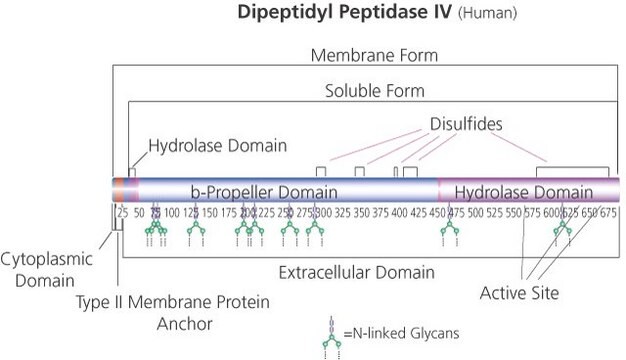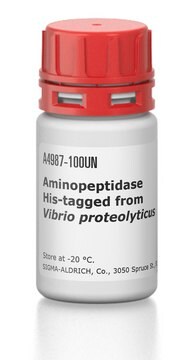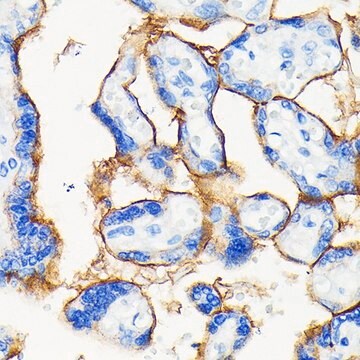Key Documents
D3321
Dipeptidyl Peptidase VII human
recombinant, expressed in Sf9 cells
Synonim(y):
DPP7, Quiescent cell proline dipeptidase
About This Item
Polecane produkty
rekombinowane
expressed in Sf9 cells
Poziom jakości
Postać
solution
aktywność właściwa
≥1,500 units/μg protein
≥1500 units/μg protein
masa cząsteczkowa
89.1 kDa
powiązane choroby
diabetes; cardiovascular diseases
Warunki transportu
dry ice
temp. przechowywania
−70°C
Zastosowanie
Działania biochem./fizjol.
Właściwości fizyczne
Definicja jednostki
Postać fizyczna
Hasło ostrzegawcze
Danger
Zwroty wskazujące rodzaj zagrożenia
Zwroty wskazujące środki ostrożności
Klasyfikacja zagrożeń
Eye Dam. 1 - Repr. 1B - Skin Corr. 1C
Kod klasy składowania
6.1C - Combustible acute toxic Cat.3 / toxic compounds or compounds which causing chronic effects
Klasa zagrożenia wodnego (WGK)
WGK 2
Certyfikaty analizy (CoA)
Poszukaj Certyfikaty analizy (CoA), wpisując numer partii/serii produktów. Numery serii i partii można znaleźć na etykiecie produktu po słowach „seria” lub „partia”.
Masz już ten produkt?
Dokumenty związane z niedawno zakupionymi produktami zostały zamieszczone w Bibliotece dokumentów.
Nasz zespół naukowców ma doświadczenie we wszystkich obszarach badań, w tym w naukach przyrodniczych, materiałoznawstwie, syntezie chemicznej, chromatografii, analityce i wielu innych dziedzinach.
Skontaktuj się z zespołem ds. pomocy technicznej









